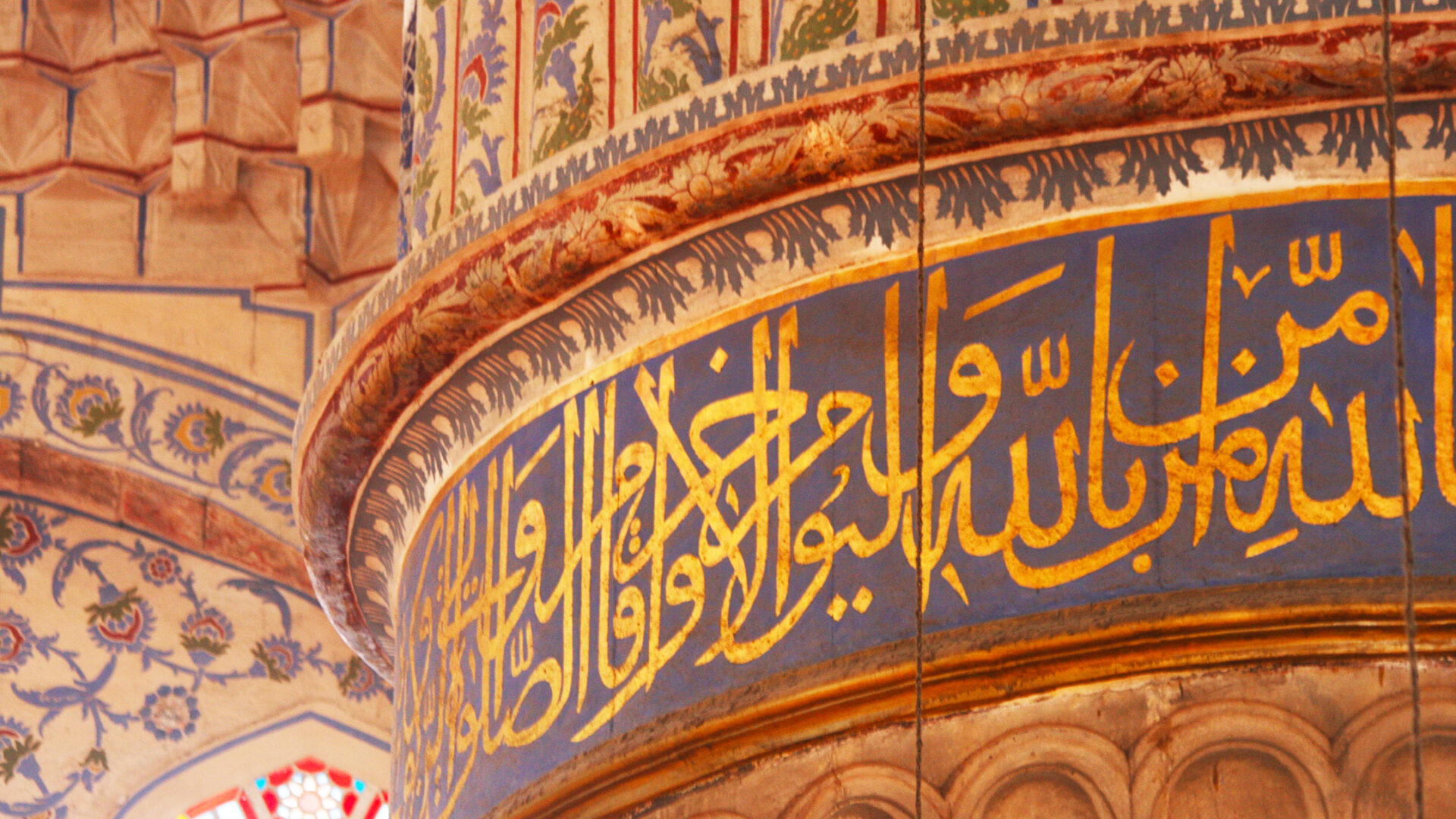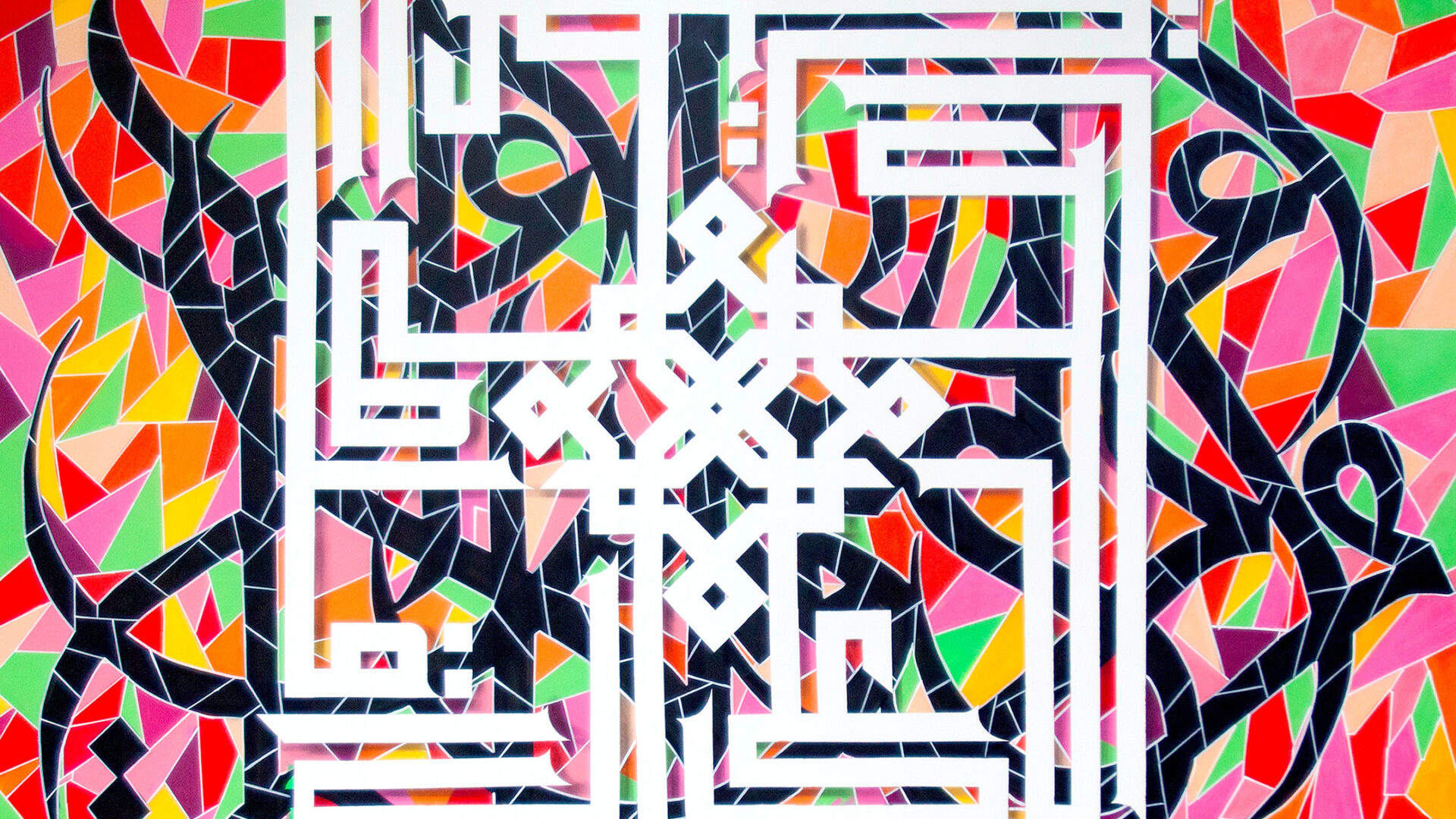The refinement of written language in search of the most beautiful form with which to create works of art is found in many ancient cultures, from traditional Chinese and Japanese calligraphy, to European illuminated manuscripts and Bibles. But nowhere has is developed into a more sophisticated, complex and elaborate art form than in the Arab world. The roots of Arabic calligraphy are entangled with the spread of Islam and the shift from a largely oral culture to one of letters. The refinement of the Arabic script dates back to the first written Quran, and the proliferation of calligraphy as an art form is in part due to a belief among certain communities that to create images of living things was blasphemous, leading them to instead focus on abstract art forms such as geometry and calligraphy.

Arabic calligraphy has evolved over many centuries and is no longer associated only with Islam. It has been embraced by contemporary artists, designers and architects, who have continued a process of evolution begun in the seventh century, creating new, ever more imaginative scripts. From the carved stone of the Taj Mahal, to the decorative façade of the Dome of the Rock, to the paintings of modernist pioneers like Iraq’s Dia Azzawi, to the graffiti adorning the streets of Beirut today, Arabic calligraphy is an astonishingly versatile, enduring, and, above all, beautiful art form.
—
Wondering where to stay in Beirut? Take a look at Baffa House, La Maison Rayes and Zanzoun, our Family Members in the Lebanese capital.
—
Arabic calligraphy boasts dozens of scripts, each unique and steeped in history. The earliest form of Arabic calligraphy was a script known as Kufic, which was developed in the late seventh century in the city of Kufa in Iraq. Characterised by its thick strokes and angular letters, the script is still popular among modern designers. By the early eighth century, the Islamic caliphate extended from northern India all the way to North Africa and Spain. Across this enormous empire, spanning diverse cultures and traditions, calligraphers began to experiment, creating new scripts that came to serve a multitude of religious, political, social and cultural functions, adorning everything from books, to bowls, to buildings.
In the 20th century, an increasing number of painters and artists began to use calligraphy in their work. Traditional Arabic and Islamic calligraphy aimed to communicate the meaning of a text, sometimes creating playful shapes that echoed the message of the writing. But modern artists began to play with the forms of the letters themselves, using them to create abstract patterns. Known as Hurufiyya, this art form marked an attempt to move beyond calligraphy as script and explore its possibilities as pure form, devoid of meaning, creating a meeting point between traditional and modernity while reflecting on history, identity, politics and faith.
Modern artists began to play with the forms of the letters themselves, using them to create abstract patterns.
Most recently, contemporary Arab street artists have embraced calligraphy in their work, using it as a way to express their identity and celebrate their culture in a world increasingly wracked by Islamophobia. French-Tunisian artist eL Seed is known for his enormous calligraffiti murals. A recent work in Cairo, entitled Perception, is so vast that it covers the side of more than 50 buildings and can only be read in full from a single vantage point.

Walking the streets of Beirut, it is evident that the versatility and beauty of Arabic calligraphy have helped the art form live on in dozens of contexts and guises. Inside the Mohammad al-Amin Mosque in Downtown, traditional calligraphy adorns the domed ceiling, which is covered with swirling gold letters on rich red and blue. Out on the streets, old-fashioned stores still features signs hand-written in elegant calligraphy, and an increasingly diverse graffiti scene sees more and more walls overlaid with stylised Arabic script. Graffiti artist Yazan Halwani uses Arabic calligraphy to adorn his stunning murals, which include an enormous painting of singer and actress Sabah on the side of a building in Hamra and a portrait of beloved icon Fairuz on a side-street in Gemmayzeh.
Steeped in history and refined over centuries, Arabic calligraphy remains one of the most complex, beautiful and versatile art forms in the contemporary world.